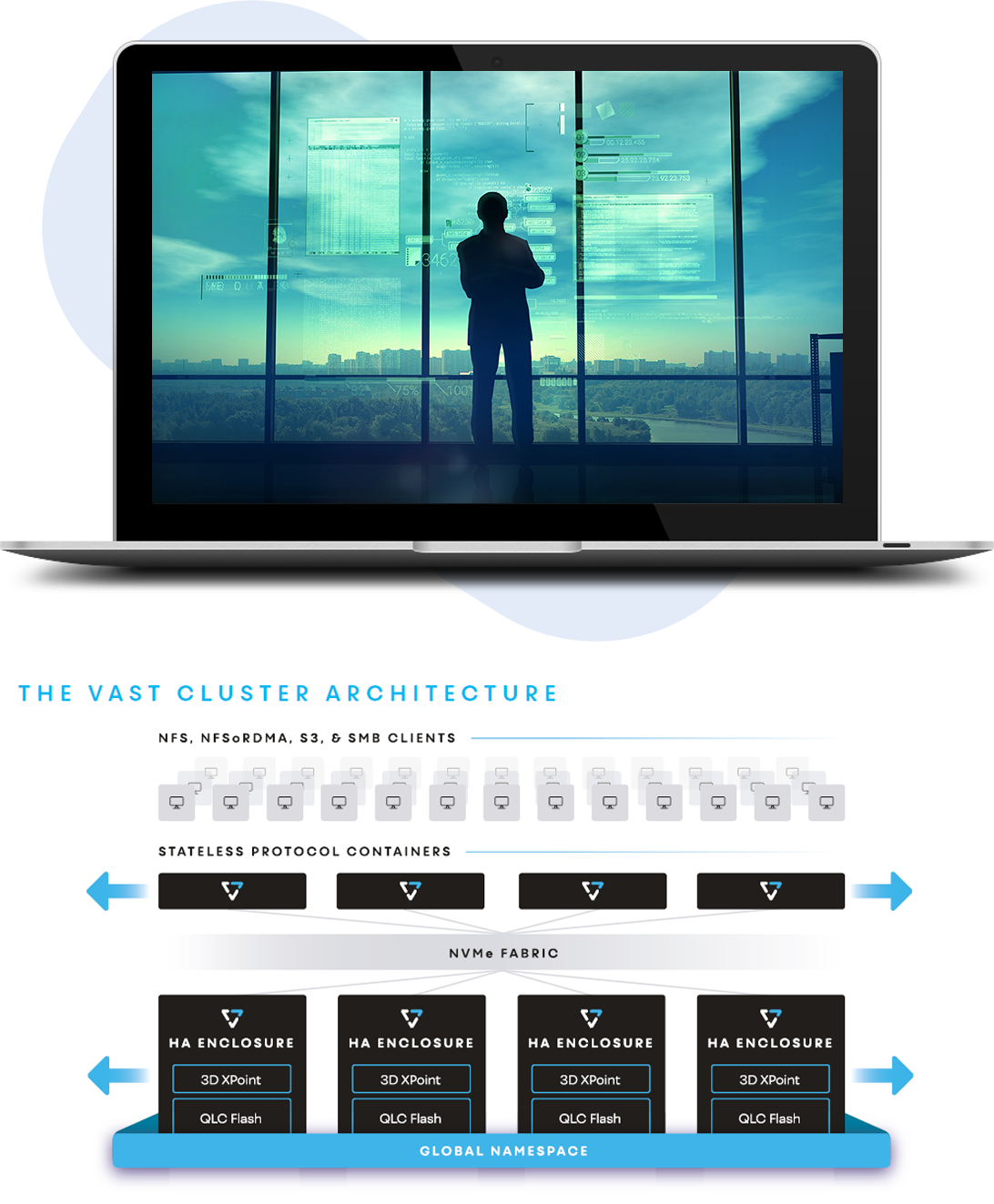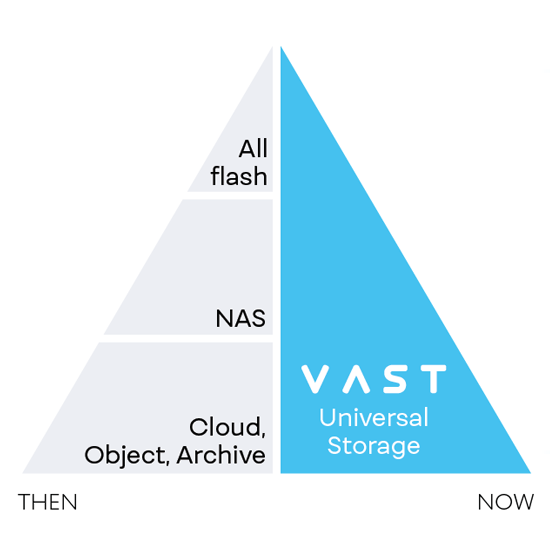VAST Data has reinvented scalable storage and broken all of the tradeoffs with its DASE Architecture
When it’s possible to store all of your data in a single tier of storage that’s fast enough for all of your demanding applications, large enough to manage all of your data, and affordable enough such that the economic arguments for HDDs no longer apply, everything is simple. When exabytes of data are available in real time, new insights become possible.
VAST SERVERS
A cluster can be built with 2-10,000 stateless servers. Servers can be collocated with applications as containers and made to auto-scale with application demand.
QLC FLASH
A scalable, shared-everything cluster can be built by connecting every server and device in the cluster over commodity data center networks (Ethernet or IB).
NVMe ENCLOSURES
Highly-Available NVMe Enclosures manage over one usable PB per RU. Enclosures can be scaled independent of Servers and clusters can be built to manage exabytes.
DATABASE CONSISTENCY
With VAST’s transactional file system, data is managed using append-on-write semantics. Data is never overwritten in place – new writes are committed to new write stripes via a layer of indirection created through pointers stored in non-volatile, storage class memory. No volatile caches. No batteries. Since every write is atomic, the file system can never be corrupted through loss of power or a system crash. Without journals, there is no need for legacy fsck tools.
MULTI-PROTOCOL SYSTEM
Each VAST protocol server has direct access to an exabyte-scale global namespace. Data access is fast from any protocol, data is unbounded.

DISAGGREGATED, SHARED-EVERYTHING
VAST’s DASE storage architecture breaks from the idea that scalable storage needs to be built from shared-nothing clusters. When servers are disaggregated from storage, everything is better:
- Servers are stateless, and failures of any server never require data reconstruction across a network
- Servers are loosely coupled in a scalable cluster – each operating independently while all accessing a shared, global namespace, thereby eliminating cluster cross-talk and enabling virtually limitless scale
- New, global algorithms are implemented to achieve game-changing levels of efficiency and resilience

VAST GLOBAL QLC FLASH TRANSLATION
INNOVATION TO DRIVE RADICAL STORAGE ECONOMICS
LEGACY SYSTEMS
Legacy storage systems were not designed to work with large, multi-GB flash erase blocks and low-endurance drives. While QLC devices cost significantly less than traditional enterprise flash, it takes a new architecture concept to be able to use these devices and ensure over a decade of device longevity.
INDIRECT-ON-WRITE FILE SYSTEM
The DASE cluster architecture leverages TBs to PBs of Storage Class Memory
(3D XPoint) to buffer writes into global and persistent fabric-attached memory. VAST’s log-based file system creates a layer of indirection for new writes and appends. This indirection enables the system to only write in full, multi-GB QLC flash erase blocks - vastly reducing garbage collection, and enabling an unnaturally higher level of device endurance.
GLOBAL WEAR LEVELING AND WRITE AMORTIZATION
QLC flash wear leveling is done at the global level, and the system balances the needs of transactional workloads with the needs of archive data to deliver an averaged endurance that is greater than what QLC devices provide themselves.
PREDICTIVE DATA PLACEMENT
Moreover, VAST exploits additional context provided by the applications to predictively place data in QLC erase blocks that have a common life expectancy. By eliminating write amplification, VAST systems can be deployed for over a decade… all backed by by VAST Data’s 10-Year Endurance Warrantee.
All-Flash File and Object Storage, Exabyte-Scale with NAS Simplicity

